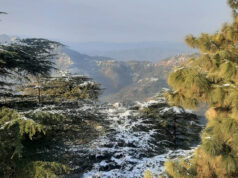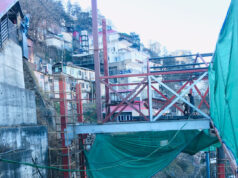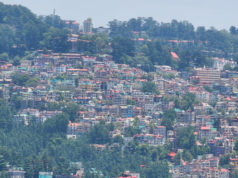Winter brings a wave of excitement for tourists eager to experience the snow-clad beauty of Himachal Pradesh. Shimla, Kufri, Mashobra, Narkanda, Manali, Dharamshala, and Palampur are among the destinations that draw thousands of visitors every year. However, the growing influx of tourists has laid bare a harsh reality: these once-pristine locations are now struggling under the weight of mismanagement, litter, and a glaring lack of basic amenities.
“The place is crowded, dusty, unorganised, and expensive. It’s a complete waste of time and money,” reads a recent review about Kufri. Similar sentiments echo across travel forums and social media platforms, painting a grim picture of the state of tourism in Himachal. These grievances are not mere rants but a testament to systemic failures that threaten to tarnish the state’s reputation as a premier tourist destination.
Take Kufri, for instance. Known for its scenic vistas and winter sports, the hill station has become synonymous with chaos. The famed Mahasu Peak, once a serene pasture, is now a hub of shanties and unregulated activities. Horse rides along muddy, poorly maintained paths lead to a destination that many describe as underwhelming. Overcharging, misbehaviour, and lack of cleanliness further mar the experience. This deterioration isn’t confined to Kufri; it’s a story repeated across Himachal’s tourist spots.
Mountains of Garbage and Poor Infrastructure
The primary culprit behind this decline is the unmanageable volume of waste. Shimla, the capital city, generates over 90 metric tons of garbage daily during peak tourist seasons. Nearby attractions like Mashobra, Narkanda, and Naldehra face similar challenges. Plastic bottles, wrappers, and other non-biodegradable waste litter the landscape, creating an eyesore and threatening the fragile Himalayan ecosystem.
Despite the Swachh Bharat Abhiyan and other cleanliness drives, the lack of sustained waste management systems remains glaring. Local authorities have failed to implement strict measures to curb littering, and tourists, too, are often indifferent to their surroundings.
Infrastructure is another major concern. Basic facilities such as clean public restrooms, parking spaces, and proper signage are either inadequate or nonexistent. The absence of well-maintained walking trails and safe roads makes accessing many destinations a daunting task. For instance, the approach to Kufri’s Mahasu Peak involves navigating a treacherous, narrow path, often on horseback, which many tourists find unsafe.
Manali: A Crowded and Expensive Affair
Manali, another jewel in Himachal’s tourism crown, has become a victim of its own popularity. Overcrowding during peak seasons leads to traffic snarls that can last for hours. Hotels and homestays, capitalizing on the demand, charge exorbitant rates, often without providing value for money. Solang Valley and Rohtang Pass, the main attractions, suffer from unchecked commercialization and waste accumulation.
Moreover, the unregulated adventure tourism industry poses risks to both tourists and the environment. Paragliding, skiing, and river rafting activities often operate without proper safety protocols, resulting in frequent accidents. The Beas River, a lifeline for the region, bears the brunt of pollution from these activities.
Dharamshala and Palampur: Beauty Overshadowed by Neglect
In Kangra district, Dharamshala and Palampur offer a mix of spiritual and natural attractions. However, these towns, too, struggle with poor maintenance and lack of planning. The Dalai Lama’s residence in McLeodganj attracts global tourists, but the area’s narrow roads and insufficient parking facilities create bottlenecks. Public amenities such as toilets and waste disposal bins are woefully inadequate, leaving visitors frustrated.
Palampur, famous for its tea gardens, has immense potential as an eco-tourism hub. Yet, the absence of proper facilities and promotional efforts has kept it from realizing this potential.
The Environmental Toll
Himachal’s ecological balance is under severe threat. The unchecked disposal of plastic waste clogs rivers and streams, affecting aquatic life and downstream communities. Deforestation and unplanned construction to accommodate the growing tourist influx have led to soil erosion and increased vulnerability to landslides.
The fragile Himalayan ecosystem cannot sustain this relentless exploitation. The National Green Tribunal (NGT) has repeatedly flagged these issues, urging the state government to adopt sustainable tourism practices. However, progress has been slow, and enforcement of environmental regulations remains lax.
Voices of Concern
Shimla Deputy Commissioner Anupam Kashyap acknowledges the dire situation. “Kufri is a priority for us. We will ensure that tourists are neither exploited nor misbehaved with. At the same time, we want to ensure the livelihood of the local people is not affected,” he says. The Forest Department, too, has promised initiatives such as eco-tourism projects, beautification drives, and improved cleanliness.
But promises alone won’t suffice. The tourism industry is a significant contributor to Himachal’s economy, supporting thousands of livelihoods. If the state fails to address these challenges, it risks losing its appeal, with devastating consequences for local communities.
The Way Forward
- Sustainable Waste Management: Himachal needs a robust waste management system that includes strict penalties for littering, efficient garbage collection, and recycling facilities. Public awareness campaigns must encourage tourists to act responsibly.
- Improved Infrastructure: Basic amenities such as clean restrooms, proper parking, and well-maintained roads should be prioritized. Creating dedicated walking trails and cycling paths can enhance the tourist experience while reducing environmental impact.
- Regulated Tourism Activities: Adventure tourism operators must adhere to safety and environmental standards. Authorities should issue permits based on compliance with these regulations.
- Community Involvement: Local communities should be involved in managing tourist spots. Training programs can equip them to offer better services, ensuring that tourism benefits everyone.
- Promoting Lesser-Known Destinations: Redirecting tourists to less popular but equally beautiful locations can reduce pressure on overcrowded spots. Developing these areas with eco-friendly infrastructure can provide alternative revenue streams for the state.
- Technology Integration: Mobile apps offering information about tourist spots, real-time traffic updates, and waste disposal points can improve convenience and encourage responsible behaviour.
A Call to Action
Himachal Pradesh stands at a crossroads. It can either continue down the path of neglect, risking the loss of its natural and cultural heritage, or it can embrace sustainable tourism practices that balance economic growth with ecological preservation. The state’s allure lies in its pristine beauty and serene environment. Protecting these treasures is not just a necessity but a responsibility owed to future generations.













